Automatic CPU Overclocking:
We ignored the option to activate OC Genie via the onboard button (which doesn't exist) and applied MSI's automated overclocking profile via the UEFI graphic.
The OC Genie setting applied a 4.00GHz CPU frequency to our 4770K and opted for a 1.20V VCore. Other settings remaining untouched, with our memory operating at its XMP setting of 2400MHz CL10 at 1.65V.
MSI could have been more generous with its OC Genie configuration. A 100MHz speed bump over the MCT setting isn't really a compelling boost that will fill gamers with gratification.
As MSI did with some of its Z87 Gaming series motherboards (and perhaps higher-end Z97 Gaming series parts), the company could have pushed the boat out a little and provided a secondary profile that operates at 4.2-4.4GHz. Even poor overclocking ‘K' chips should be able to reach those frequency levels.
A maximum core voltage of 1.2V is used for the 4GHz frequency. We confirmed this recording with a multimeter reading from MSI's onboard voltage check points.
Manual CPU Overclocking:
To test the MSI Z97 Gaming 5 motherboard’s CPU overclocking potential, we first increased the CPU VCore to 1.325V, Ring voltage to 1.275V, and CPU Input Voltage to 1.900V. The ‘CPU Ring' ratio was set to 39x. These settings represent levels which we would consider safe for 24/7 usage with a mid-range, or better, CPU cooler.
Despite having some irritating layout styles, overclocking a processor via MSI's UEFI is incredibly easy. We simply increased the CPU ratio, opted for a fixed multiplier mode, and tweaked some frequency settings.
All of the fundamental overclocking parameters were displayed on the same page, meaning that we did not have to sift through a number of sections looking for the relevant setting. Gigabyte's UEFI team ought to take note.
Coloured writing also helps novice overclockers understand when desired operational voltages are reaching high levels.
We can confidently say that voltage accuracy of MSI's Z97 Gaming 5 motherboard was not great. We applied a 1.325V VCore, with automatic LLC settings, but our chip was fed 1.36V during load. We certified this value with a multimeter reading and through MSI's software.
A sub-20mV offset when using automatic LLC modes is typical for many LGA 1150 motherboards. However, 35mV extra is a sizeable overshoot, especially in comparison to our increase of only 125mV from the 1.2V stock MCT VCore level.
This issue is almost certainly related to an early BIOS iteration used by our Z97 Gaming 5 sample. We informed MSI's engineers who confirmed that they were working on correcting the overshoot for future BIOS iterations.
Especially when manually overclocking, we must emphasise the point of using MSI's Command Center software to obtain and certify voltage readings. We can already envisage the influx of forum complaints when users record a startlingly high (and wrong) voltage level through third party software.
 KitGuru KitGuru.net – Tech News | Hardware News | Hardware Reviews | IOS | Mobile | Gaming | Graphics Cards
KitGuru KitGuru.net – Tech News | Hardware News | Hardware Reviews | IOS | Mobile | Gaming | Graphics Cards


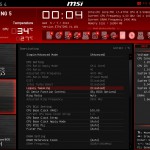
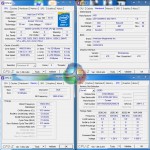
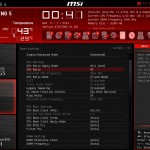
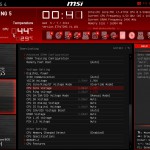
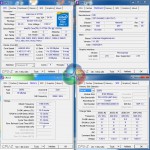

GOod looking board but MSI do need to work on their bioses, my Z87 was very flaky on some settings too. I ended up getting rid of the board and going for an ASUS Sabretooth Z87 board – bios was much better laid out and some of the settings worked the way they should to.
I dont think this board is as nice looking as some of their Z87 boards. Some good information Luke on the bios and the heatsinks – always come here first for reviews on motherboards as you go into much more detail than other sites I visit.
Couple of questions, but first a type-o, 1156 was before Sandy Bridge.
Really good to know about the voltage accuracy with the control centre, and the discrepancy with the bios settings, this is an issue with my current MSI LGA1156 board. Good work on that!
It looks to me as if the overclocked Bioshock results are exactly the same as the stock speed results. Maybe it’s worth testing a game that would actually see the benefit?
I don’t suppose you had the chance to check whether the surround upmix mode in the creative settings would allow you to cleanly upmix a stereo source to all the channels or whether it has to apply a pseudo surround effect?
Deders,
Thanks for pointing out the mistake – I have updated it. And thanks for the feedback.
You’re right – the Bioshock results do not change when CPU frequency is scaled up. I used Metro: Last Light in our Z87 motherboard reviews, but that game did not scale with increased frequency either.
I am currently looking into a game which is more sensitive to CPU frequencies and which is consistent with its results. Many of the popular games are GPU-limited at 1920×1080 (above a certain CPU performance level). And I don’t want to drop the resolution to emphasise CPU performance because I think that 1920×1080 is FAR too popular to justify that. For now, it’s the performance differences (if any) between each motherboard that are important for the gaming results.
I did not have chance to test the surround upmix mode unfortunately. I do not currently have access to my surround sound speakers, either, but audio performance of the motherboards is something that I would like to look into in more depth in the future. It will take a large amount of planning first though.
Luke
Hi. First of all a very good review. It is very interesting for to read this article. Especially the part with the performance of Plextor M6e SSD. I’ve a similar system. It’s a MSI Z97 Gaming 7 and the Plextor M6e SSD m.2. I’ve never reached an performance like in your article. Have you installed the standard msahci driver (Windows 7) or the Intel iastor (RST) driver? I belive my m.2 connector is the problem. Have you special settings in BIOS. Perhaps you some ideas for me.
Thanks in advanced.
Marcel
Can i install my windows in M.2 drive will it boot from there, i found not post over internet but just one unsuccesssful one.
Guys might i add that the MSI additional power that is fed to the molex adapter IS for the rear audio ports and not the USB ports (which already get power ONLY thru the mobo and get a constant 5v). It might make a difference but who knows. Its made that way so it gets a constant clean power feed thru the psu directly instead of thru the 24pin mobo connector.